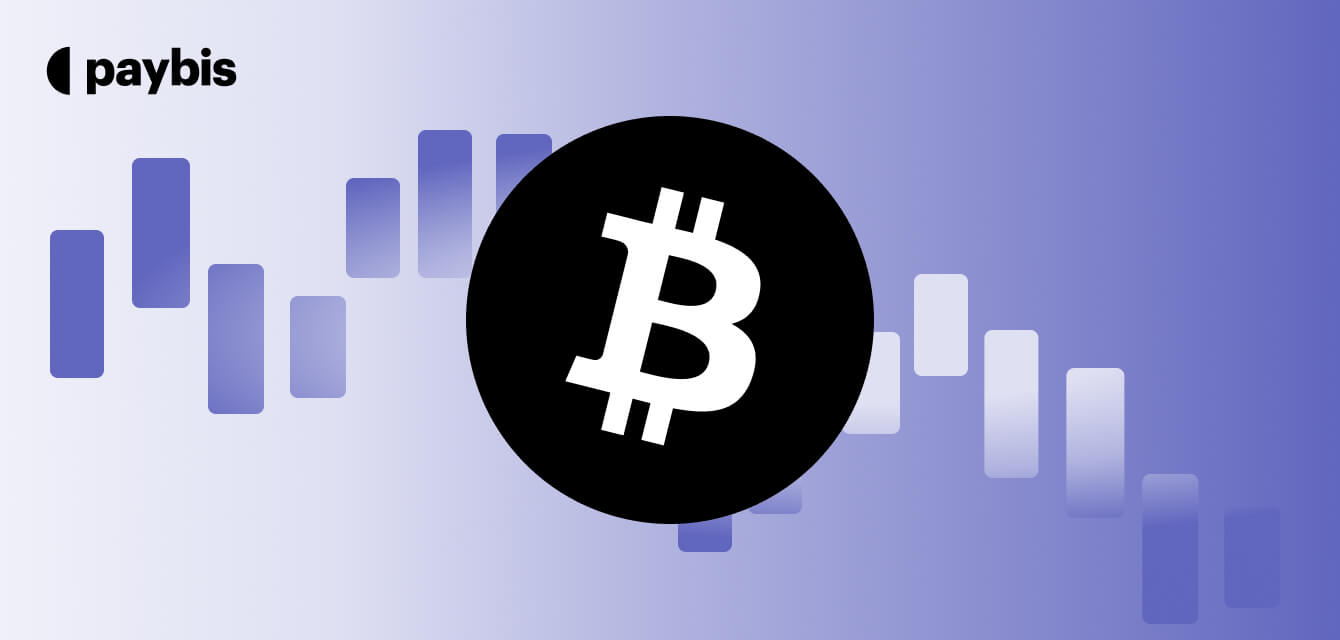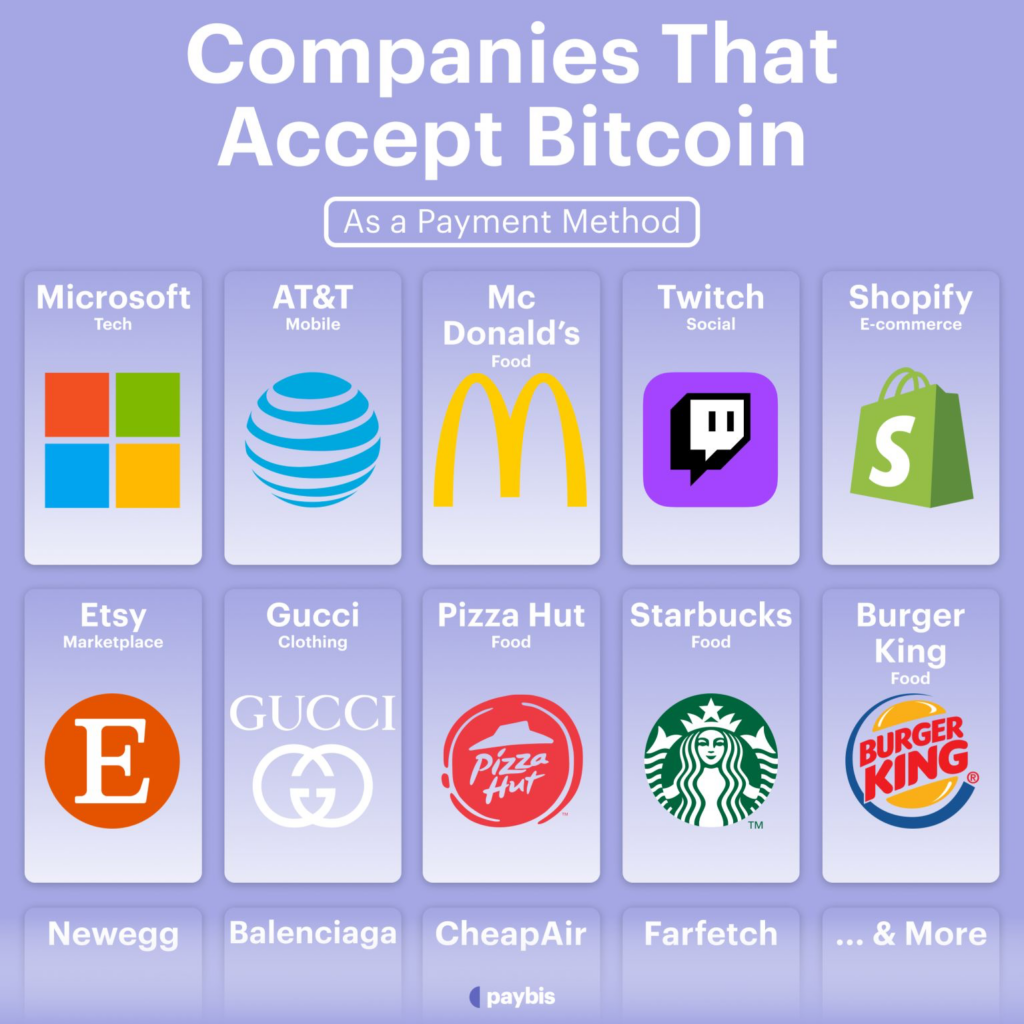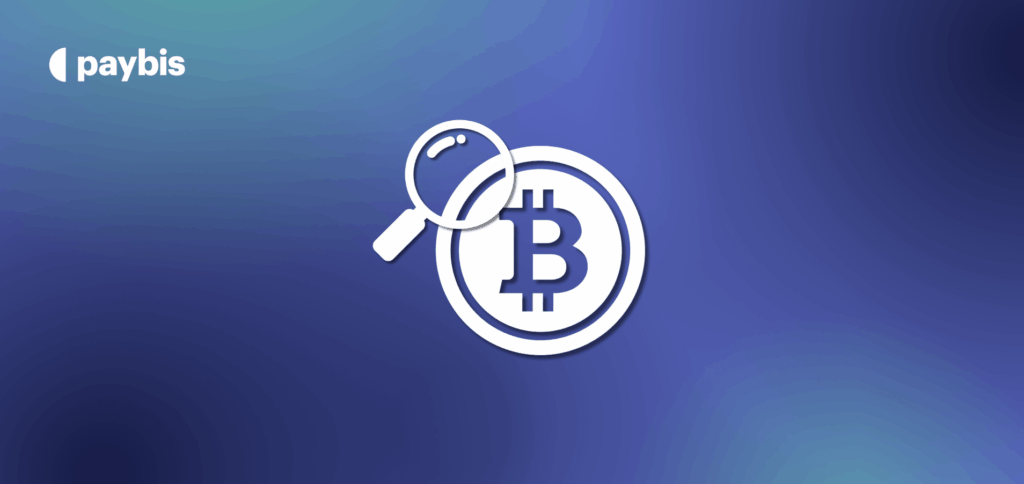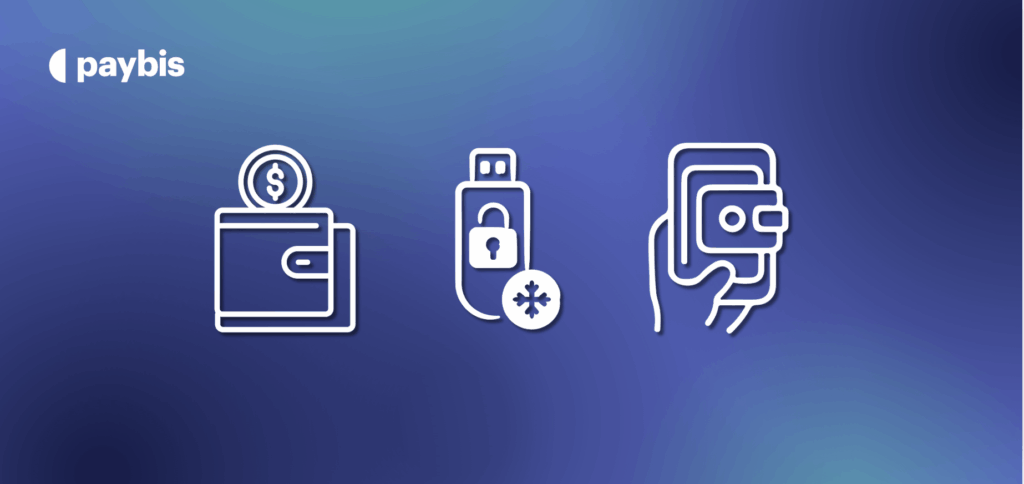How To Use Bitcoin For Beginners: Learn & Unlock New Use Cases Today
Bitcoin (BTC) has disrupted the financial landscape since its inception in 2009. Its decentralized nature and underlying blockchain technology promise a paradigm shift in how we perceive and utilize money. While its volatility often grabs headlines, Bitcoin’s potential extends far beyond speculative investment.
Growing mainstream adoption underscores Bitcoin’s increasing utility. A 2023 report by Crypto.com estimates that over 580 million individuals globally own cryptocurrency, showcasing the asset class’s rising appeal. This growth is further fueled by institutional curiosity, with major corporations like MicroStrategy and Tesla adding significant amounts of Bitcoin to their balance sheets.
Developing nations, too, are increasingly exploring Bitcoin as a hedge against inflation and a means to facilitate cross-border remittances. El Salvador’s historic move in 2021 to make Bitcoin legal tender highlights the search for alternative financial systems in some parts of the world.
This article serves as a practical guide to utilizing Bitcoin. While we acknowledge the inherent risks associated with cryptocurrency markets, this piece aims to shed light on the expanding real-world applications of Bitcoin.
Important Note: The cryptocurrency market is dynamic and subject to fluctuations. This article is for informational purposes only and should not be construed as financial advice. Always conduct thorough research before engaging with Bitcoin or any cryptocurrency.
Table of contents
Getting Your First BTC
To use Bitcoin, you first need to have some. The smaller unit of Bitcoin, called a ‘satoshi’, is 0.00000001 BTC. At Paybis, you can purchase Bitcoin for less than $100.
Here’s how to buy Bitcoin:
- Create an Account: The signup process is quick and straightforward. Simply provide your personal details and complete the verification steps.
- Choose Your Payment Method: Paybis offers a wide range of options, including credit/debit cards, bank transfers, and various local payment methods. This flexibility ensures you can choose the most convenient option for your situation.
- Seamless Purchase Process: The intuitive interface guides you through the buying process. Specify the amount of Bitcoin you want and confirm the transaction using your chosen payment method.
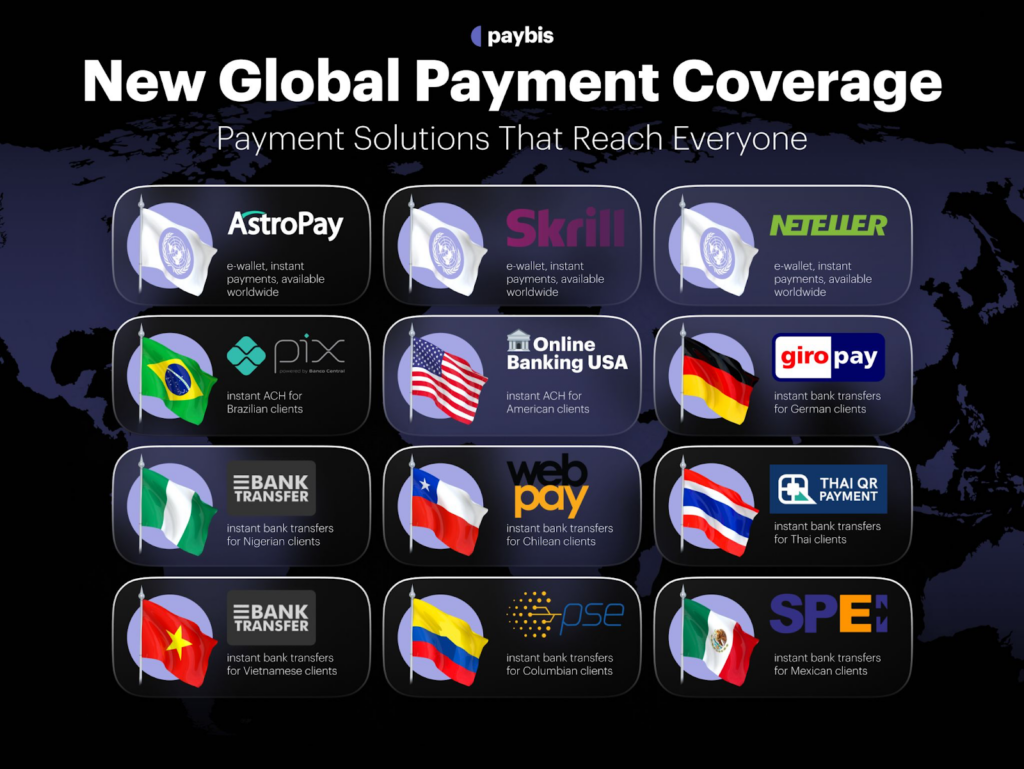
In the process, you have an option of storing your BTC in Paybis Wallet or a third-party wallet.
A third-party wallet puts the burden of managing and securing private keys on you. If you lose or expose your private keys, your funds may be lost for ever and there is little anyone can do to retrieve them.
With Paybis Wallet, you only have to login to your Paybis account with your credentials and we will take care of keeping your assets secure in our cold storage facilities secured by MPC technology.
How To Use A Bitcoin ATM
Bitcoin ATMs have become an increasingly popular way for individuals to buy and sell Bitcoin. These ATMs are similar in appearance to traditional ATMs but are specifically designed for Bitcoin transactions.
The first step in using a Bitcoin ATM is to find one near you. There are several online directories, like Coin ATM Radar, which provide a map of Bitcoin ATMs across the globe.
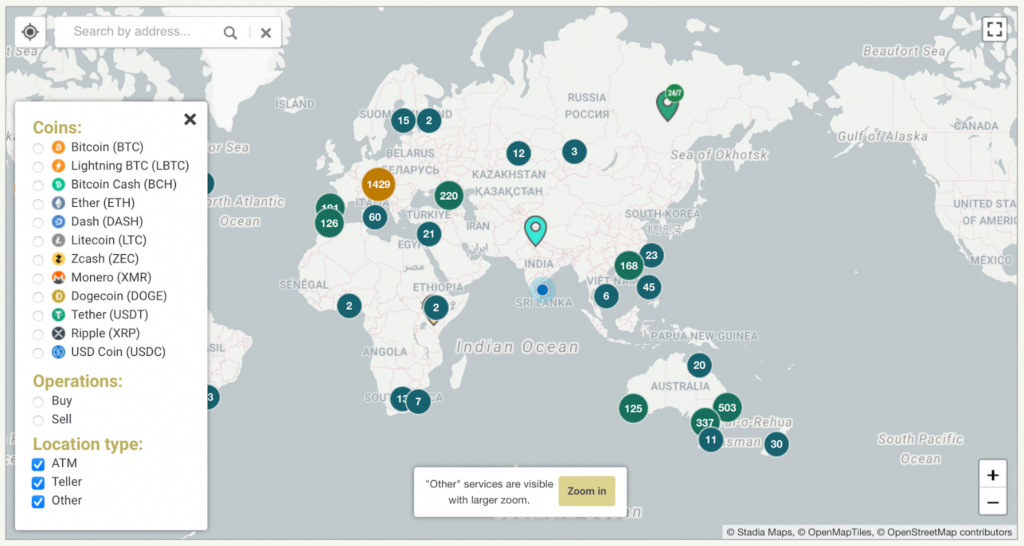
You can search by location, and these resources often provide information about the specific services offered by each ATM, such as the ability to only buy Bitcoin or both buy and sell.
Step-by-Step Guide to Using a Bitcoin ATM
Buying Bitcoins
- Verification Process: Most Bitcoin ATMs require some form of identity verification. This can range from a simple SMS verification to a more involved process requiring government-issued ID. Follow the on-screen instructions to verify your identity.
- Scan Your Bitcoin Wallet Address: To receive the Bitcoin, you need to scan the QR code of your Bitcoin wallet address. If you don’t have a wallet, some ATMs can generate a paper wallet for you.
- Insert Cash: Insert the amount of cash equivalent to the Bitcoin you wish to purchase. The ATM screen will display the exchange rate and exactly how much Bitcoin you will receive.
- Confirm Transaction: Review the transaction details, including fees and the amount of Bitcoin you’re buying. Confirm the transaction.
- Complete the Transaction: The ATM will process your transaction, which usually takes a few minutes. Once completed, the Bitcoin is sent to your wallet. You may receive a printed receipt for your records.
Selling Bitcoins
- Verification Process: As with buying, selling may require you to undergo a verification process.
- Send Bitcoin to the ATM: Select the amount you wish to sell and send the corresponding amount of Bitcoin to the provided address from your wallet. This is usually done by scanning a QR code with your smartphone.
- Wait for Confirmation: Wait for the transaction to be confirmed on the blockchain. This may take some time depending on the network’s congestion.
- Withdraw Cash: Once the transaction is confirmed, the ATM will dispense the equivalent cash amount.
Fees and Limits
Bitcoin ATMs typically charge a fee for their services. Fees can range from 5% to 10% or more, depending on the ATM and current market conditions. Additionally, most ATMs have transaction limits – both minimum and maximum amounts of cash or Bitcoin that can be transacted per day. Be aware of these limits and fees before using the ATM.
Note: Some BTMs only let you buy, not sell your Bitcoin. Do your research beforehand!
How to Use Bitcoin to Grow Your Portfolio
Before investing in Bitcoin, it’s crucial to understand its nature as a high-risk, high-reward asset. Its price can experience significant fluctuations in a short period, influenced by factors such as regulatory news, technological developments, and market sentiment.
Despite this volatility, Bitcoin has shown tremendous growth over the years (as seen in the BTC price chart below) and has been a lucrative investment for many.
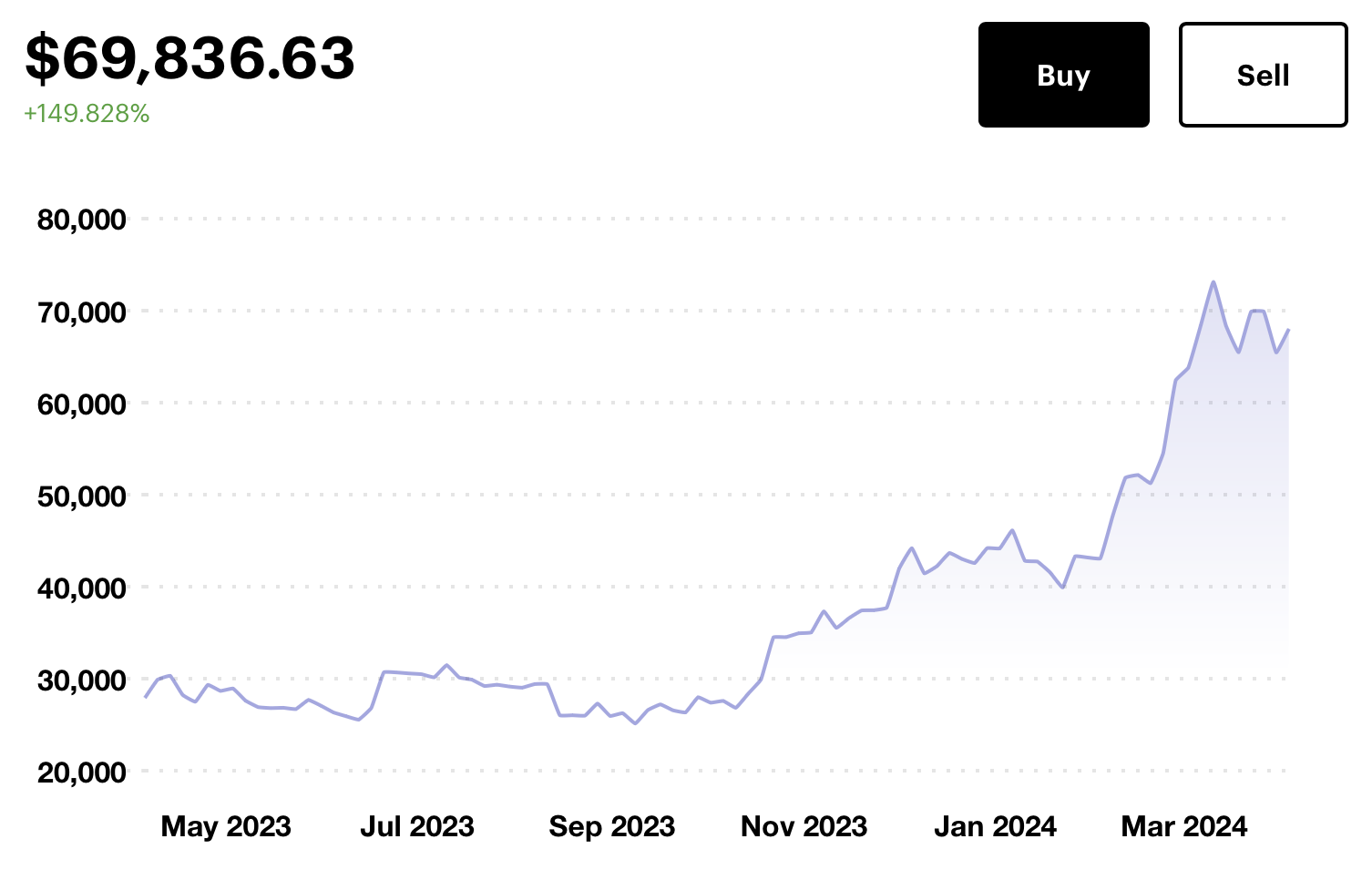
Trading Bitcoin: The Basics
Trading Bitcoin involves buying and selling the cryptocurrency in hopes of making a profit from its price fluctuations. Here’s a basic guide to start trading:
- Choose a Trading Style: Determine your trading style based on your risk tolerance and time commitment. Common styles include day trading (short-term), swing trading (medium-term), and position trading (long-term).
- Select a Reliable Exchange: Choose a cryptocurrency exchange with a good reputation, security measures, and reasonable fees. Popular exchanges include Coinbase, Binance, and Kraken.
- Understand Market Analysis: Learn the basics of technical analysis (studying charts and patterns) and fundamental analysis (considering news, economic indicators, etc.) to make informed decisions.
- Start with a Demo Account: Many platforms offer demo accounts where you can practice trading without risking real money.
- Risk Management: Never invest more than you can afford to lose. Utilize stop-loss orders to limit potential losses.
Long-term Investment Strategies with Bitcoin
For those looking to invest in Bitcoin for the long term:
- Buy and Hold (HODL): This strategy involves purchasing Bitcoin and holding onto it, regardless of short-term market fluctuations, in anticipation of long-term growth.
- Dollar-Cost Averaging (DCA): Invest a fixed amount in Bitcoin at regular intervals (e.g., weekly or monthly). This strategy can reduce the impact of volatility.
- Diversify Your Portfolio: While Bitcoin might be a key asset in your portfolio, consider diversifying with other cryptocurrencies and traditional investments like stocks and bonds to mitigate risk.
Paybis is a secure avenue for people who are opting into the classic “buy and hold” investment strategy.
Diversifying Portfolio with Bitcoin
Incorporating Bitcoin into a diversified portfolio can offer several advantages:
- Non-Correlation with Traditional Assets: Bitcoin often exhibits price movements that are independent of traditional financial markets, providing a diversification benefit.
- Inflation Hedge: Some investors view Bitcoin as a digital gold and a hedge against inflation.
- Bitcoin ETFs: Some ETFs (Exchange-Traded Funds) offer exposure to Bitcoin price movements without directly owning the cryptocurrency.
- Crypto-Related Stocks: Companies involved in Bitcoin mining or or holding BTC on its balance sheet (like Microstrategy) can provide indirect exposure.
Understand the risks involved and tailor your approach to your own risk tolerance and financial goals.
How to Use Bitcoin to Buy Things (Goods and Services)
The growing acceptance of Bitcoin as a legitimate form of payment has opened up new avenues for consumers to spend their cryptocurrency on goods and services.
Useful links
Where Can You Spend Bitcoin?
- Online Retailers and Marketplaces: Many e-commerce sites now accept Bitcoin. Websites like Overstock, Newegg, and Shopify stores are among the prominent ones. Additionally, some travel websites allow you to book flights and hotels with Bitcoin.
- Local Businesses and Physical Stores: A growing number of local businesses, such as cafes and restaurants, are beginning to accept Bitcoin. Use apps like CoinMap.org to find local businesses that accept Bitcoin.
- Gift Cards and Vouchers: Services like Gyft and eGifter allow you to purchase gift cards for various retailers using Bitcoin. This is a great way to spend Bitcoin at stores that don’t directly accept it.
We have a detailed blog on different companies that accept cryptocurrencies. Read it to learn more.
Coinmap and Spendabit are two places where you can look up places to spend your BTC in exchange for goods and services (either directly or indirectly).
Making a Payment with Bitcoin: Step-by-Step Process
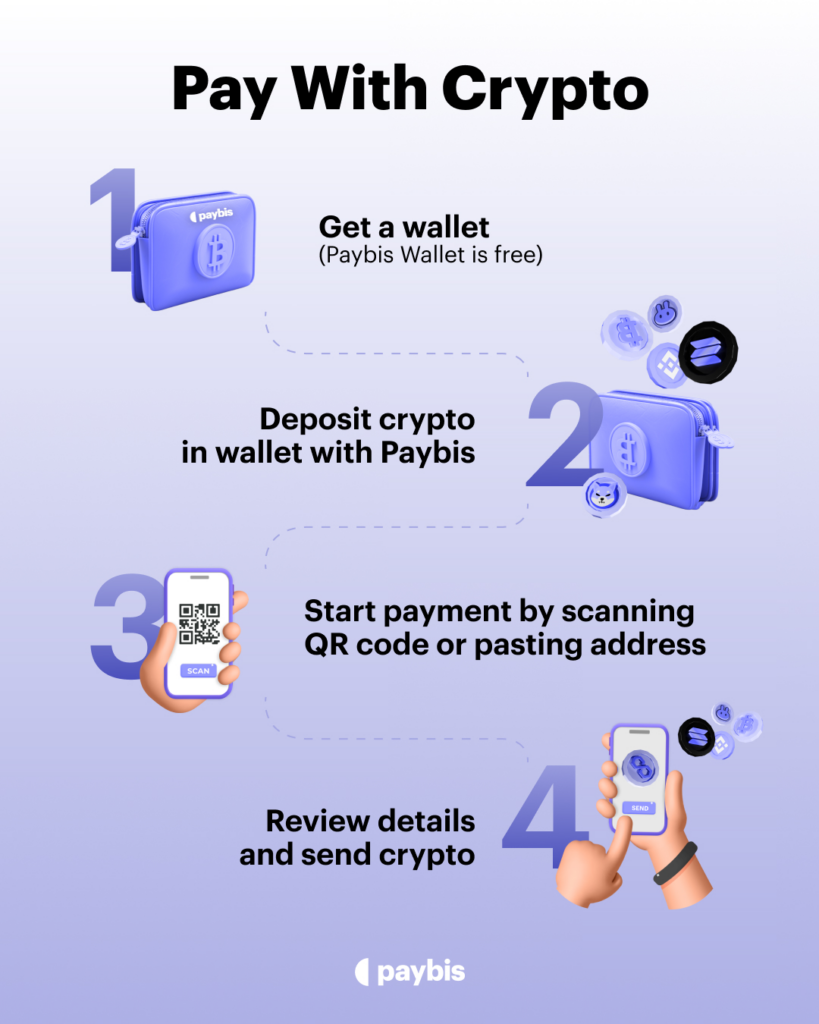
Choose Bitcoin as Your Payment Method: At checkout, select Bitcoin (or cryptocurrency) as your preferred payment method.
Processing the Transaction:
- Online Payments: You will be presented with a QR code to scan with your Bitcoin wallet or a Bitcoin address to send the payment to.
- In-Store Payments: Similar to online payments, you’ll scan the store’s QR code with your Bitcoin wallet app and confirm the amount.
Transaction Fees and Times: Bitcoin transaction fees can vary depending on network congestion. Transactions can take from a few minutes to an hour to be confirmed, so keep this in mind, especially for in-person purchases.
Confirming the Transaction: After you send the Bitcoin, both parties will wait for network confirmations. Once the transaction is confirmed, the payment is considered complete.
Learn more about how to pay with Bitcoin in our previous article.
How To Use Bitcoin For Sports Betting
Before you proceed reading this, please be advised that betting on sports is highly risky and even illegal in many parts of the world. The following information is solely for educational purposes and does not encourage any form of gambling.
Using Bitcoin for sports betting has become increasingly popular due to its convenience, speed, and enhanced privacy.
Betting with Bitcoin isn’t fundamentally different from betting with traditional currency in terms of the betting process. The key difference lies in the currency used. Bitcoin betting offers advantages like faster transactions, lower fees, and a degree of anonymity.
Here’s an educational guide on how to use Bitcoin for sports betting:
- Setting up a Bitcoin wallet: Before you can start betting, you need a Bitcoin wallet. This digital wallet is where you’ll store your Bitcoins. There are various types of wallets, including hardware wallets, mobile wallets, and web wallets. Choose one that suits your needs in terms of security and convenience.
- Acquiring Bitcoin: You can buy Bitcoin through Paybis, from individuals, or through Bitcoin ATMs. Link your wallet to the platform and purchase the desired amount of Bitcoin.
- Choosing a betting platform: Not all sports betting sites accept Bitcoin, so you’ll need to find one that does. Kindly do your own research for this.
- Depositing BTC: Once you have selected a platform, create an account with them. To deposit Bitcoin, go to the cashier section, choose Bitcoin as your deposit method, and transfer Bitcoin from your wallet to the address provided by the website.
- Placing bets: With your account funded, you can start placing bets. The process is similar to traditional betting – select the sport, event, and the type of bet you want to place, then enter your stake. Your potential winnings are usually displayed at the time of placing your bet.
- Withdrawals in Bitcoin: If you win and wish to withdraw your winnings in Bitcoin, go to the withdrawal section of the website. Enter the amount you wish to withdraw and provide your Bitcoin wallet address. Withdrawal times can vary based on the processing time and network congestion.
Be aware of the laws regarding sports betting and cryptocurrency use in your jurisdiction.
Advanced Uses of Bitcoin
While many associate Bitcoin primarily with investment and purchasing, its capabilities extend into more sophisticated domains, such as international finance, and remittances.
Traditional cross-border payment methods often come with high fees and slow processing times. Bitcoin, in contrast, operates on a decentralized network, enabling quicker and more affordable transactions. This is particularly beneficial for businesses engaged in international trade, offering a more streamlined financial conduit.
Bitcoin is opening new avenues, especially for communities with limited access to traditional banking. By using Bitcoin, individuals can bypass the hefty fees and inefficiencies of conventional remittance channels. The process involves the sender purchasing Bitcoin and transferring it to the recipient’s digital wallet. Upon receipt, the beneficiary can either retain the Bitcoin or convert it into local currency. This system not only cuts down costs but also accelerates the transfer process, allowing recipients to receive funds swiftly.
Perhaps the most intriguing development in Bitcoin’s utility spectrum is its foray into the world of smart contracts. Although Bitcoin’s capabilities in this area are more limited compared to platforms like Ethereum, it does offer a basic form of smart contracts. These are self-executing contracts with the terms of the agreement encoded in the blockchain. Bitcoin’s scripting language, while not as expansive, allows for the creation of certain types of automated agreements.
One notable application is in the creation of multi-signature accounts, which require multiple keys to authorize a transaction, thereby offering enhanced security and shared control, ideal for business partnerships. Another use case is in escrow transactions, where Bitcoin is held and only released when specific contractual conditions are met, ensuring a trustless and secure trading environment.
Final Thoughts
Bitcoin’s potential to transform various aspects of finance is undeniable. Beyond its early reputation as a speculative asset, Bitcoin’s use cases are continuously expanding. From secure storage and convenient purchases to investment strategies and cross-border payments, Bitcoin offers unique possibilities in the digital economy.
While volatility remains inherent to the cryptocurrency space, Bitcoin’s growing mainstream adoption, particularly its exploration as a hedge against inflation by developing nations, positions it as a compelling player in the evolving financial landscape.
As always, a thorough understanding of the risks and a measured approach are essential for anyone looking to engage with Bitcoin.
Looking ahead, the development of Bitcoin L2s, Ordinals, and other supporting technologies are likely to aid in the cryptocurrency’s mainstream adoption.
Found this insightful? Read more like this on the Paybis blog.
Disclaimer: Don’t invest unless you’re prepared to lose all the money you invest. This is a high‑risk investment and you should not expect to be protected if something goes wrong. Take 2 mins to learn more at: https://go.payb.is/FCA-Info
